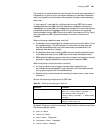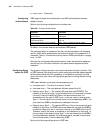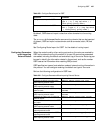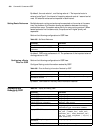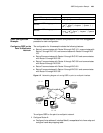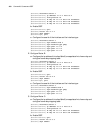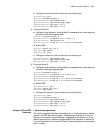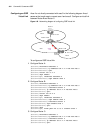
OSPF Configuration Example 443
Run display ospf peer on Router A to show OSPF peer. Note that Router A has
3 peers.
[RouterA] display ospf peer
The status of every peer is full, which means that Router A has created
neighboring relation with all peers. Only DR and BDR have created neighboring
relation with all routers on the network. Router A is DR and Router C is BDR on the
network. All other peers are DRother, which means that they are neither DR nor
BDR.
Change the preference of Router B to 200:
[RouterB-Ethernet0] ospf dr-priority 200
Run display ospf peer on Router A to show OSPF peers. Note that the
preference of Router B has been changed to 200, but it is not DR.
[RouterA] display ospf peer
Only when the DR no longer exists on the network are the DR changed. Shut
down Router A and run
display ospf peer on Router D to display peers. Note
that Router C, which was BDR, now becomes DR and so does Router B.
[RouterD] display ospf peer
Shutting down the router and restarting leads to the reelection of DR and BDR.
Restart router A and run the
display ospf peer command to display peers. Note
that router B is elected DR (whose preference is 200) and Router A becomes BDR
(whose preference is 100).
[RouterD] display ospf peer
Peer pri State Address Interface
4.4.4.4 1 full/DRother 192.1.1.4 Ethernet0
3.3.3.3 2 full/BDR 192.1.1.3 Ethernet0
2.2.2.2 0 full/DRother 192.1.1.2 Ethernet0
Peer pri State Address Interface
4.4.4.4 1 full/DRother 192.1.1.4 Ethernet0
3.3.3.3 2 full/BDR 192.1.1.3 Ethernet0
2.2.2.2 200 full/DRother 192.1.1.2 Ethernet0
Peer pri State Address Interface
3.3.3.3 2 full/BDR 192.1.1.3 Ethernet0
2.2.2.2 200 full/DR 192.1.1.2 Ethernet0
Peer pri State Address Interface
1.1.1.1 100 full/BDR 192.1.1.1 E0
3.3.3.3 2 full/DRother 192.1.1.3 E0
2.2.2.2 200 full/DR 192.1.1.2 E0



